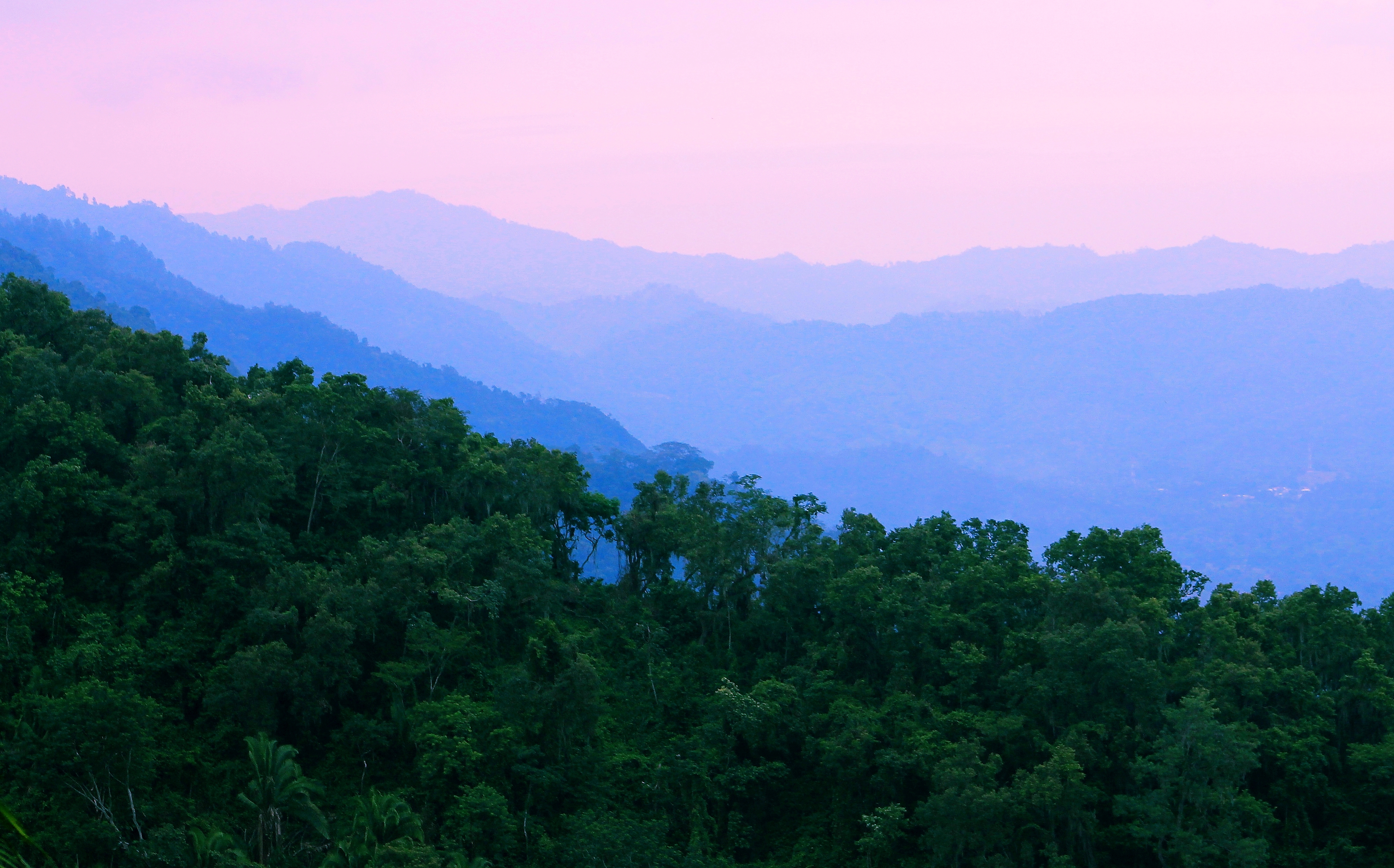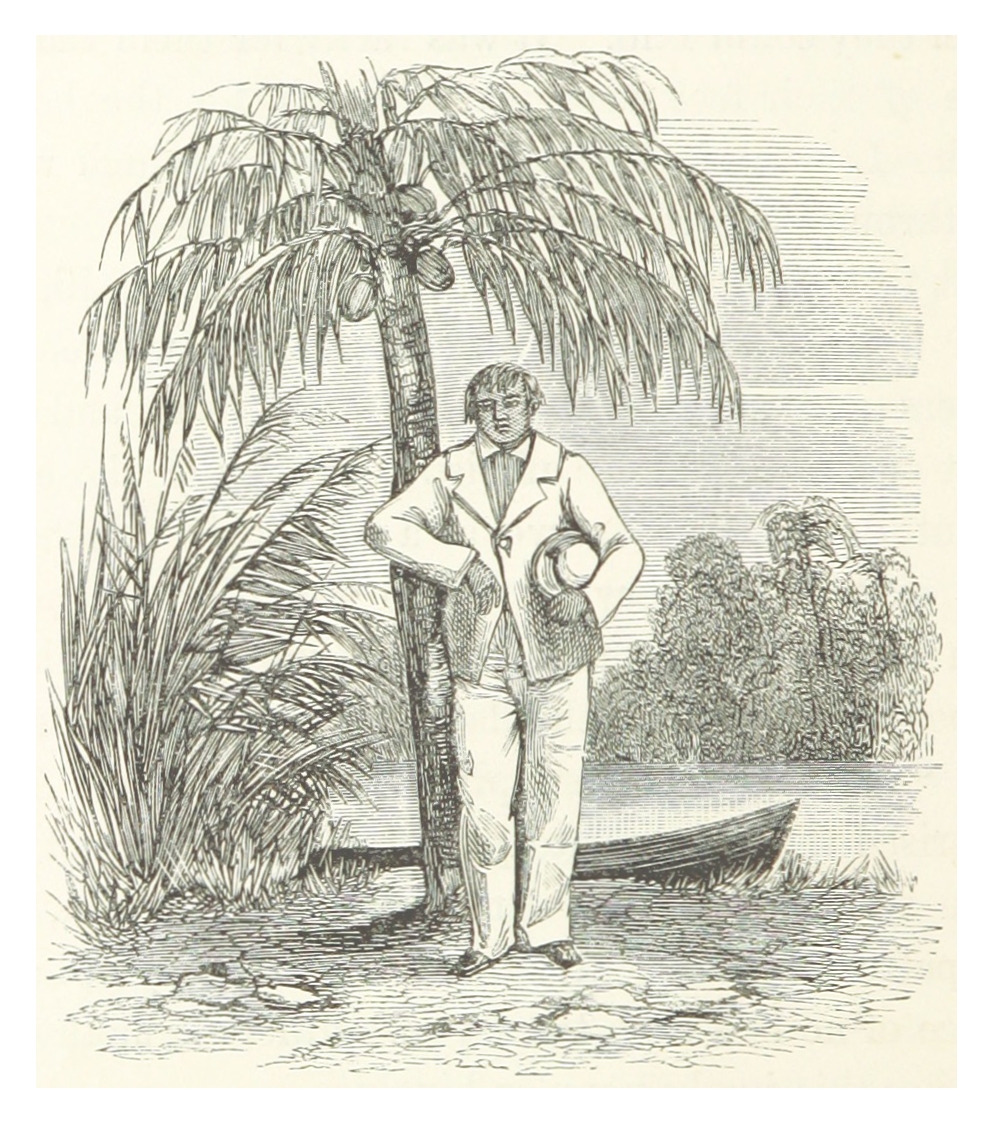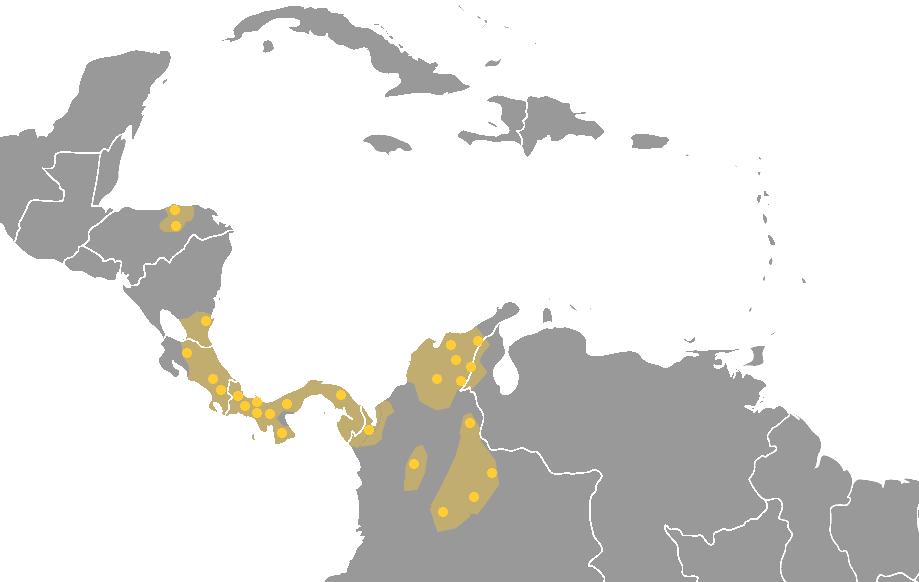|
Spanish Conquest Of Honduras
The Spanish conquest of Honduras was a 16th-century conflict during the Spanish colonization of the Americas in which the territory that now comprises the Republic of Honduras, one of the seven states of Central America, was incorporated into the Spanish Empire. In 1502, the territory was claimed for the king of Spain by Christopher Columbus on his fourth and final trip to the New World. The territory that now comprises Honduras was inhabited by a mix of indigenous peoples straddling a transitional cultural zone between Mesoamerica to the northwest, and the Intermediate Area to the southeast. Indigenous groups included Maya, Lenca, Pech, Miskitu, Mayangna (Sumu), Jicaque, Pipil and Chorotega. Two indigenous leaders are particularly notable for their resistance against the Spanish; the Maya leader Sicumba, and the Lenca ruler referred to as Lempira (a title meaning "Lord of the Mountain"). In March 1524, Gil González Dávila became the first Spaniard to arrive in what is no ... [...More Info...] [...Related Items...] OR: [Wikipedia] [Google] [Baidu] |
Spanish Colonization Of The Americas
Spain began colonizing the Americas under the Crown of Castile and was spearheaded by the Spanish . The Americas were invaded and incorporated into the Spanish Empire, with the exception of Brazil, British America, and some small regions of South America and the Caribbean. The crown created civil and religious structures to administer the vast territory. The main motivations for colonial expansion were profit through resource extraction and the spread of Catholicism by converting indigenous peoples. Beginning with Columbus's first voyage to the Caribbean and gaining control over more territory for over three centuries, the Spanish Empire would expand across the Caribbean Islands, half of South America, most of Central America and much of North America. It is estimated that during the colonial period (1492–1832), a total of 1.86 million Spaniards settled in the Americas, and a further 3.5 million immigrated during the post-colonial era (1850–1950); the esti ... [...More Info...] [...Related Items...] OR: [Wikipedia] [Google] [Baidu] |
Puerto De Caballos
{{disambiguation, geo ...
Puerto, a Spanish word meaning ''seaport'', may refer to: Places * El Puerto de Santa María, Andalusia, Spain *Puerto, a seaport town in Cagayan de Oro City, Philippines * Puerto Colombia, Colombia * Puerto Cumarebo, Venezuela * Puerto Galera, Oriental Mindoro, Philippines * Puerto La Cruz, Venezuela * Puerto Píritu, Venezuela * Puerto Princesa, Palawan, Philippines *Puerto Rico, an unincorporated territory of the United States * Puerto Vallarta, Mexico Others * ''Puerto Rico'' (board game) * Operación Puerto doping case See also * * Puerta (other) Puerta refers to the old original gates of the Walled City of Intramuros in Manila. Puerta may also refer to: People * Antonio Puerta, Spanish footballer * Alonso José Puerta, Spanish politician * Lina Puerta, American artist *Mariano Puerta ... [...More Info...] [...Related Items...] OR: [Wikipedia] [Google] [Baidu] |
Caribbean
The Caribbean (, ) ( es, El Caribe; french: la Caraïbe; ht, Karayib; nl, De Caraïben) is a region of the Americas that consists of the Caribbean Sea, its islands (some surrounded by the Caribbean Sea and some bordering both the Caribbean Sea and the North Atlantic Ocean) and the surrounding coasts. The region is southeast of the Gulf of Mexico and the North American mainland, east of Central America, and north of South America. Situated largely on the Caribbean Plate, the region has more than 700 islands, islets, reefs and cays (see the list of Caribbean islands). Island arcs delineate the eastern and northern edges of the Caribbean Sea: The Greater Antilles and the Lucayan Archipelago on the north and the Lesser Antilles and the on the south and east (which includes the Leeward Antilles). They form the West Indies with the nearby Lucayan Archipelago (the Bahamas and Turks and Caicos Islands), which are considered to be part of the Caribbean despite not bordering the Caribbe ... [...More Info...] [...Related Items...] OR: [Wikipedia] [Google] [Baidu] |
Gil González Dávila
Gil González Dávila or Gil González de Ávila (b. 1480 – 21 April 1526) was a Spanish conquistador and the first European to explore present-day Nicaragua. Early career González Dávila first appears in historical records in 1508, when he received a royal commission to examine accounts and tax records of estates. He probably traveled soon afterward to Santo Domingo for his assignment, and to establish himself. In 1511, from Valladolid, Spain, he was given the title of Accountant of Hispaniola or contador. By 1514, the Hispaniola treasury staff put in place by Ferdinand, included Gil, who had replaced Cristóbal de Cuéllar as contador, Miguel de Pasamonte, who had been named treasurer general of the Indies in April 1508, and Juan Martinez de Ampies as factor. His enhanced position enabled him to become a teacher and he soon had an estate with over 200 Indian slaves. In 1518, González delivered a report to Charles V which was highly critical of the colonial management ... [...More Info...] [...Related Items...] OR: [Wikipedia] [Google] [Baidu] |
Mayangna People
The Mayangna (also known as Sumu or Sumo) are a people who live on the eastern coasts of Nicaragua and Honduras, an area commonly known as the Mosquito Coast. Their preferred autonym is Mayangna, as the name "Sumo" is a derogatory name historically used by the Miskito people. Their culture is closer to that of the indigenous peoples of Costa Rica, Panama, and Colombia than to the Mesoamerican cultures to the north. The Mayangna inhabited much of the Mosquito Coast in the 16th century. Since then, they have become more marginalized following the emergence of the Miskito as a regional power. Distribution The Mayangna Indians, today divided into the Panamahka, Tawahka and Ulwa ethno-linguistic subgroups, live primarily in remote settlements on the rivers Coco, Waspuk, Pispis and Bocay in north-eastern Nicaragua, as well as on the Patuca across the border in Honduras and far to the south along the Río Grande de Matagalpa. The isolation of these communities has allowed the Mayagna to pr ... [...More Info...] [...Related Items...] OR: [Wikipedia] [Google] [Baidu] |
Miskito People
The Miskitos are a native people in Central America. Their territory extends from Cape Camarón, Honduras, to Río Grande de Matagalpa, Nicaragua, along the Mosquito Coast, in the Western Caribbean Zone. Their population is estimated at 700,000 people as of 2021 according to the official Miskito Database. The Miskito people speak a native Miskito language, but many can also speak Miskito Coast Creole, Spanish, English, and German. Spanish is the language of education and government, but some family educate their children in English, German, or Miskito. Miskito Coast Creole, an English-based creole language, came about through frequent contact with the British for trading, as they predominated along this coast. Many are Christians. A 1987 peace agreement afforded them land rights over traditional lands. However, despite significant political struggles throughout their history, today the Miskito face human rights violations over land rights disputes, as recognized by the Inter-Ame ... [...More Info...] [...Related Items...] OR: [Wikipedia] [Google] [Baidu] |
Maya Peoples
The Maya peoples () are an ethnolinguistic group of Indigenous peoples of the Americas, indigenous peoples of Mesoamerica. The ancient Maya civilization was formed by members of this group, and today's Maya are generally descended from people who lived within that historical region. Today they inhabit southern Mexico, Guatemala, Belize, El Salvador, and Honduras. "Maya" is a modern collective term for the peoples of the region, however, the term was not historically used by the indigenous populations themselves. There was no common sense of identity or political unity among the distinct populations, societies and ethnic groups because they each had their own particular traditions, cultures and historical identity. It is estimated that seven million Maya were living in this area at the start of the 21st century. Guatemala, southern Mexico and the Yucatán Peninsula, Belize, El Salvador, and western Honduras have managed to maintain numerous remnants of their ancient cultural her ... [...More Info...] [...Related Items...] OR: [Wikipedia] [Google] [Baidu] |
Intermediate Area
The Intermediate Area is an archaeological geographical area of the Americas that was defined in its clearest form by Gordon R. Willey in his 1971 book ''An Introduction to American Archaeology, Vol. 2: South America'' (Prentice Hall: Englewood Cliffs, NJ). It comprises the geographical region between Mesoamerica to the north and the Central Andes to the south, including portions of Honduras and Nicaragua and most of the territory of the republics of Costa Rica, Panama and Colombia. As an archaeological concept, the Intermediate Area has always been somewhat poorly defined. Because it was not home to ancient state societies but was predominated by early chiefdoms at the time of the Spanish conquest, it was sometimes regarded as a kind of cultural backwater that contributed little to the emergence of Pre-Columbian civilization in the New World. However, recent archaeological research has demonstrated that this part of the Americas had some of the earliest agriculture, potter ... [...More Info...] [...Related Items...] OR: [Wikipedia] [Google] [Baidu] |
Mesoamerica
Mesoamerica is a historical region and cultural area in southern North America and most of Central America. It extends from approximately central Mexico through Belize, Guatemala, El Salvador, Honduras, Nicaragua, and northern Costa Rica. Within this region pre-Columbian societies flourished for more than 3,000 years before the Spanish colonization of the Americas. Mesoamerica was the site of two of the most profound historical transformations in world history: primary urban generation, and the formation of New World cultures out of the long encounters among indigenous, European, African and Asian cultures. In the 16th century, Eurasian diseases such as smallpox and measles, which were endemic among the colonists but new to North America, caused the deaths of upwards of 90% of the indigenous people, resulting in great losses to their societies and cultures. Mesoamerica is one of the five areas in the world where ancient civilization arose independently (see cradle of civ ... [...More Info...] [...Related Items...] OR: [Wikipedia] [Google] [Baidu] |
Indigenous Peoples Of The Americas
The Indigenous peoples of the Americas are the inhabitants of the Americas before the arrival of the European settlers in the 15th century, and the ethnic groups who now identify themselves with those peoples. Many Indigenous peoples of the Americas were traditionally hunter-gatherers and many, especially in the Amazon basin, still are, but many groups practiced aquaculture and agriculture. While some societies depended heavily on agriculture, others practiced a mix of farming, hunting, and gathering. In some regions, the Indigenous peoples created monumental architecture, large-scale organized cities, city-states, chiefdoms, states, kingdoms, republics, confederacies, and empires. Some had varying degrees of knowledge of engineering, architecture, mathematics, astronomy, writing, physics, medicine, planting and irrigation, geology, mining, metallurgy, sculpture, and gold smithing. Many parts of the Americas are still populated by Indigenous peoples; some countries have ... [...More Info...] [...Related Items...] OR: [Wikipedia] [Google] [Baidu] |
New World
The term ''New World'' is often used to mean the majority of Earth's Western Hemisphere, specifically the Americas."America." ''The Oxford Companion to the English Language'' (). McArthur, Tom, ed., 1992. New York: Oxford University Press, p. 33: "[16c: from the feminine of ''Americus'', the Latinized first name of the explorer Amerigo Vespucci (1454–1512). The name ''America'' first appeared on a map in 1507 by the German cartographer Martin Waldseemüller, referring to the area now called Brazil]. Since the 16c, a name of the western hemisphere, often in the plural ''Americas'' and more or less synonymous with ''the New World''. Since the 18c, a name of the United States of America. The second sense is now primary in English: ... However, the term is open to uncertainties: ..." The term gained prominence in the early 16th century, during Europe's Age of Discovery, shortly after the Italian explorer Amerigo Vespucci concluded that America (now often called ''the Am ... [...More Info...] [...Related Items...] OR: [Wikipedia] [Google] [Baidu] |





_2007.jpg)